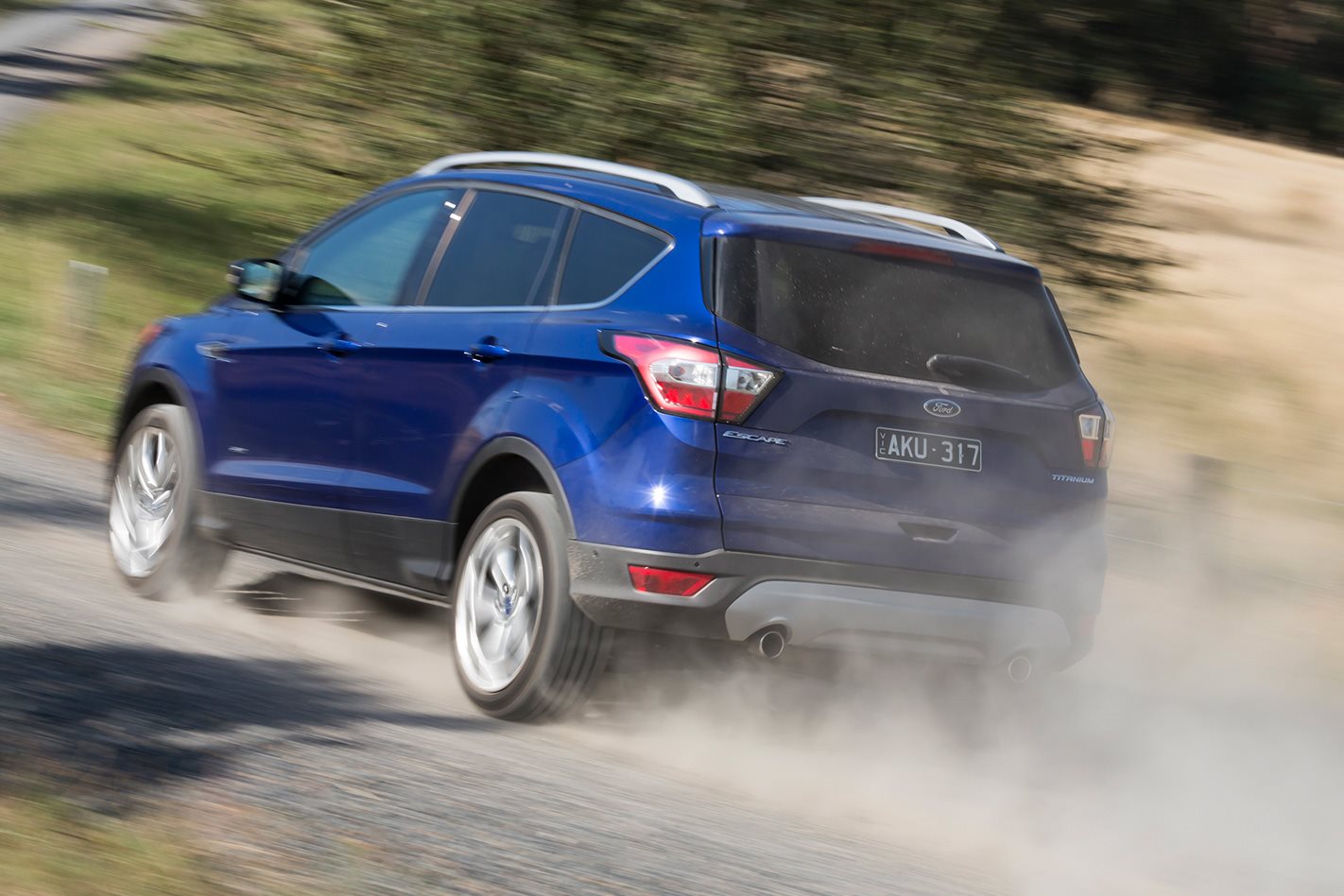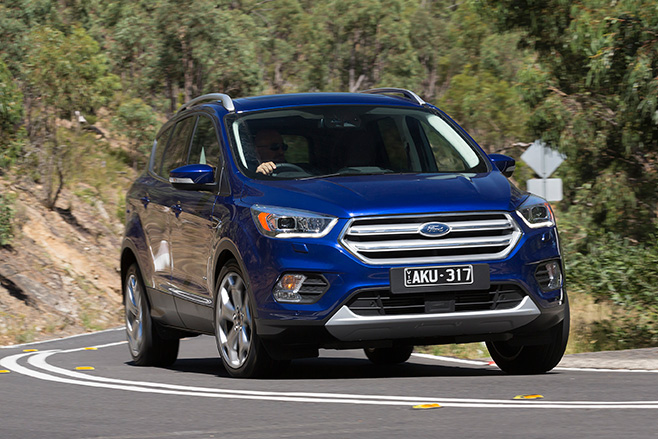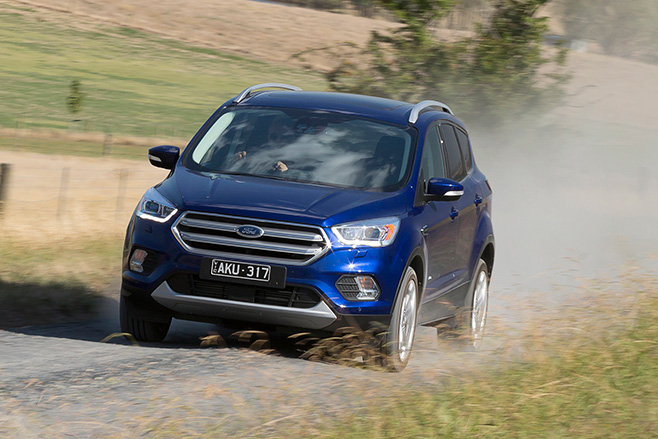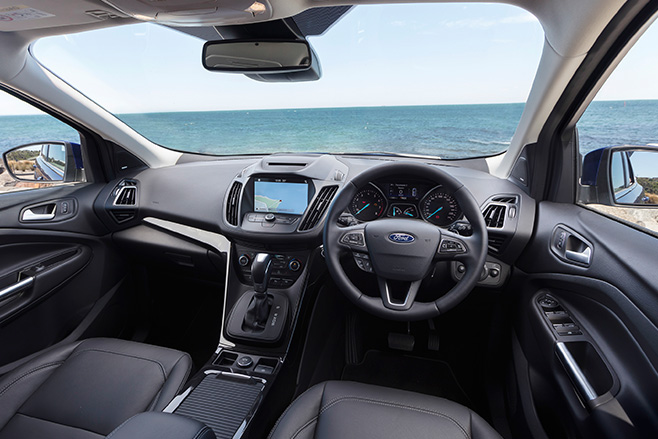
FORD has reset its small SUV line-up, replacing the Ford Kuga with a much improved version of the car that wears a new name – Escape. The change of name gives Ford a second crack at earning itself a bigger share of one of the hottest new-car sales segments on the market.
Tell me about this car
The change of name, from Kuga to Escape, also brings in a significant mid-life update for Ford’s small SUV line-up. Re-nosed, with a more front seat-focussed dash and including significant noise dampening enhancements to make the cabin a lot quieter, the Kuga/Escape handover has resulted in a significantly better car for a growing number of small SUV buyers.
It also introduces something that was missing from the Kuga range; a mid-spec automatic model, dubbed the Ford Escape Trend automatic, priced from $32,990 – the price point that buyers seem to want the most.

Strengths
- The Trend’s 134kW/240Nm 1.5-litre turbo engine is bigger-hearted than its tiny displacement would suggest. Sweet, revvy, and driving only the front wheels via a six-speed auto, it is the pick of the drivelines.
- An electric parking brake frees up heaps more room in between the front seats to store small things such as wallets, purses and mobile phones. The space is disguised as cupholders.
- Despite adding more equipment such as digital radio, push-button engine start and a reversing camera with rear parking sensors, the Escape has dropped in price compared with the Kuga. The range now starts at $28,490 for an Ambiente fitted with a turbocharged 1.5-litre four-cylinder engine fitted to a six-speed manual gearbox.
- Steering wheel-mounted paddle shifters replace a daft manual selector mounted as a toggle switch on the side of the Kuga’s gear lever. It brings a whole new level of driver enjoyment to the Escape-badged version.
- The Escape boasts a 1600-litre-plus load space once the rear seats are folded down. The floor isn’t quite flat – there’s a small lip at the opening to the boot, and the stowed rear seatbacks sit about a finger higher than the boot floor – but it’s a very useable space.
- All-wheel-drive versions of the Escape can tow up to 1600 kilograms, so can easily pull a small caravan, boat or horse float.
- The cruise control has a speed limiter function that can help to avoid a speeding fine. It won’t automatically apply the brakes to wash off speed on long downhill runs, but it will keep you under the set speed at other times.

Weaknesses
- The new turbocharged 2.0-litre engine produces 178kW and 345Nm, which makes it the most powerfully engined car in its class. However, all that performance is lost on the Escape, which feels as though it’s a reined-in stallion and struggles to get its power down to the road.
- The driving position in the Escape is very high. While it’s great for all-around visibility via the deep windows, the instrument cluster and multimedia/air conditioning controls are all a long way away from the driver’s eye on the dash.
- Ford has updated the Escape to the latest Sync3 multimedia system, but its voice recognition sometimes struggles with even basic commands. It likes you to speak clearly, and s-l-o-w-l-y.
- Automatic emergency braking is available on the Escape, but there’s a catch: it’s not standard on any model. The entry-level $28,490 Ambiente doesn’t have AEB available at all, while on the more pricey Trend (from $32,990) and the most expensive Titanium (from $44,900) models, it’s a $1300 option. In contrast, a $24,690 Skoda Octavia wagon – what we used to buy before SUVs wooed us away from traditional passenger cars – has AEB fitted as standard.
- That $1300 pack also becomes a barrier to other driver assist systems that are bundled into it; lane departure warning, adaptive cruise control that will bring the car to a complete stop, a blind spot monitor that even stops you backing out into oncoming traffic, and a tyre pressure monitor.
- At just 110kW – not much more power than a 1.6-litre Toyota Corolla’s engine – the manual version of the 1.5-litre Escape produces significantly less power than the automatic one.
- The 19-inch alloys fitted to the range-topping Titanium variants turn the smooth ride experienced on the next-model-down Trend’s 18-inch hoops into a sports car-taut trial.
- Keyless entry, where you can leave the key in a pocket or handbag yet still open a door, is part of a $1200 hands-free tailgate pack.

What other cars should I consider?
The market leader in this segment is the Mazda CX-5, a sharp, stylish and impressively packaged small SUV that’s leading the field for good reason. The Toyota RAV4 is also popular in this segment, but its strength is artificially bolstered by bulk sales to fleet and government buyers. Kia’s Sportage is a decent mix of useable features and keen pricing, backed by the safety net of a seven-year warranty. Nissan’s X-Trail is another popular contender, although it struggles a bit with road manners. The Subaru Forester is another popular choice, but its hard-wearing, plastic-heavy interior is a significant black mark against its long list of attributes.
Keep in mind, though, that a new version of the segment-leading Mazda CX-5 is due on sale in a few months’ time.



